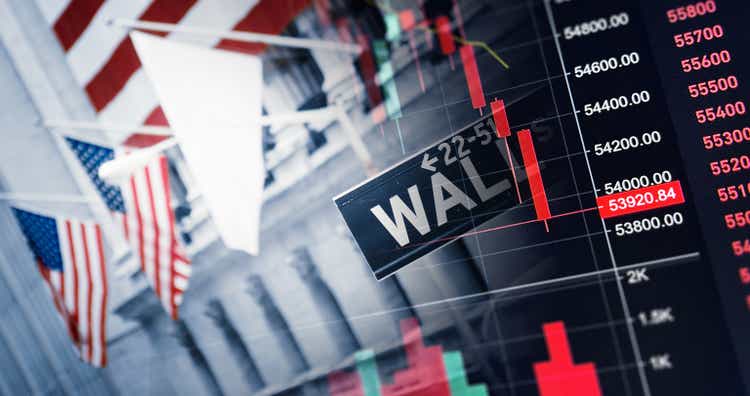franckreporter
Wall Street’s major indices had trimmed their gains by late afternoon on Tuesday, but were on track to extend their rally to three straight sessions. Treasury yields fell and a gauge of the dollar declined as Americans voted in midterm elections. Traders will be following the polls closely, as a political gridlock could prevent major policy changes.
The tech-heavy Nasdaq Composite (COMP.IND) was 0.16% higher at 10,581.25 points. The benchmark S&P 500 (SP500) had added 0.29% to 3,817.65 points. The Dow (DJI) rose 0.68% to 33,051.77 points. The blue-chip index was boosted by Amgen.
All three averages had gained more than 1% earlier, but began to pull back in the last hour or so after the results of the latest Treasury three-year note auction.
Of the 11 S&P sectors, eight were trading in positive territory, led by Materials. Energy, Consumer Discretionary and Communication Services were the three sectors trading in the red.
The bond market rallied. The U.S. 10-year Treasury yield (US10Y) was down 7 basis point to 4.14%, while the 2-year Treasury yield (US2Y) was down 5 basis point to 4.68%. The U.S. dollar index (DXY) had ticked lower by 0.4% to 109.7.
Looking to another part of the market, bitcoin (BTC-USD) fell amid worries over Sam Bankman-Fried’s Alameda Research hedge fund.
Midterm Election Day was the main event of the day on Tuesday. Republicans are expected to take control of the lower house of U.S. Congress, with many expecting the party to also take the edge in the Senate. Investors will also be looking out for a possibility of gridlock, an outcome that is not always bad for equities and securities markets.
“Under the assumption the Republicans win either or both houses of Congress, we assume no further fiscal support in our (U.S. economic) projection beyond what has been already legislated… The politicization of fiscal expansion seems likely to be a material obstacle until after the Presidential election in November 2024, and gridlock likely resumes in the meantime,” UBS economists said in a research note.
“However, if we are wrong and Democrats retain control of Congress, more meaningful fiscal policy could be possible, particularly in fighting a recession. Of course that would risk higher interest rates, as the FOMC would likely remain vigilant about enforcing the economy to stay within anti-inflation speed limits,” the economists added.
The calendar is quiet once again in terms of economic data. Traders are looking ahead to Thursday’s inflation report for cues on the state of consumer prices and what the data could mean in terms of the Federal Reserve and its pace of rate hikes.
“Post-election, we would expect a small lift in the equity market over the next month (+1%) – assuming the CPI print on Thursday is not ‘hot.’ Defensive sector outperformance (i.e., Utilities, Staples, Health Care) is expected to last assuming we see an Election Day ‘red wave.’ Style-wise, stronger relative performance from momentum and low-vol strategies has also been associated with prior red waves,” Wells Fargo said in an investor note.
“Longer term, we will likely need to see the Fed end the tightening cycle before we can start contemplating material, 1995-style long-term gains.”
Earnings news was also in focus. Take-Two Interactive was the top S&P 500 (SP500) percentage loser, after the videogame publisher issued a weak holiday season sales outlook. Conversely, rival company Activision Blizzard reported a results beat and said its planned sale to Microsoft remained on track to close as per schedule. Ride-hailing firm Lyft slumped on disappointing numbers.
Among other active movers, Amgen hit a record high and helped boost the Dow. Nvidia advanced after the chipmaker confirmed to Reuters it launched a new chip in China that adheres to recently introduced U.S. export rules to prevent access to cutting-edge tech.
Image and article originally from seekingalpha.com. Read the original article here.

